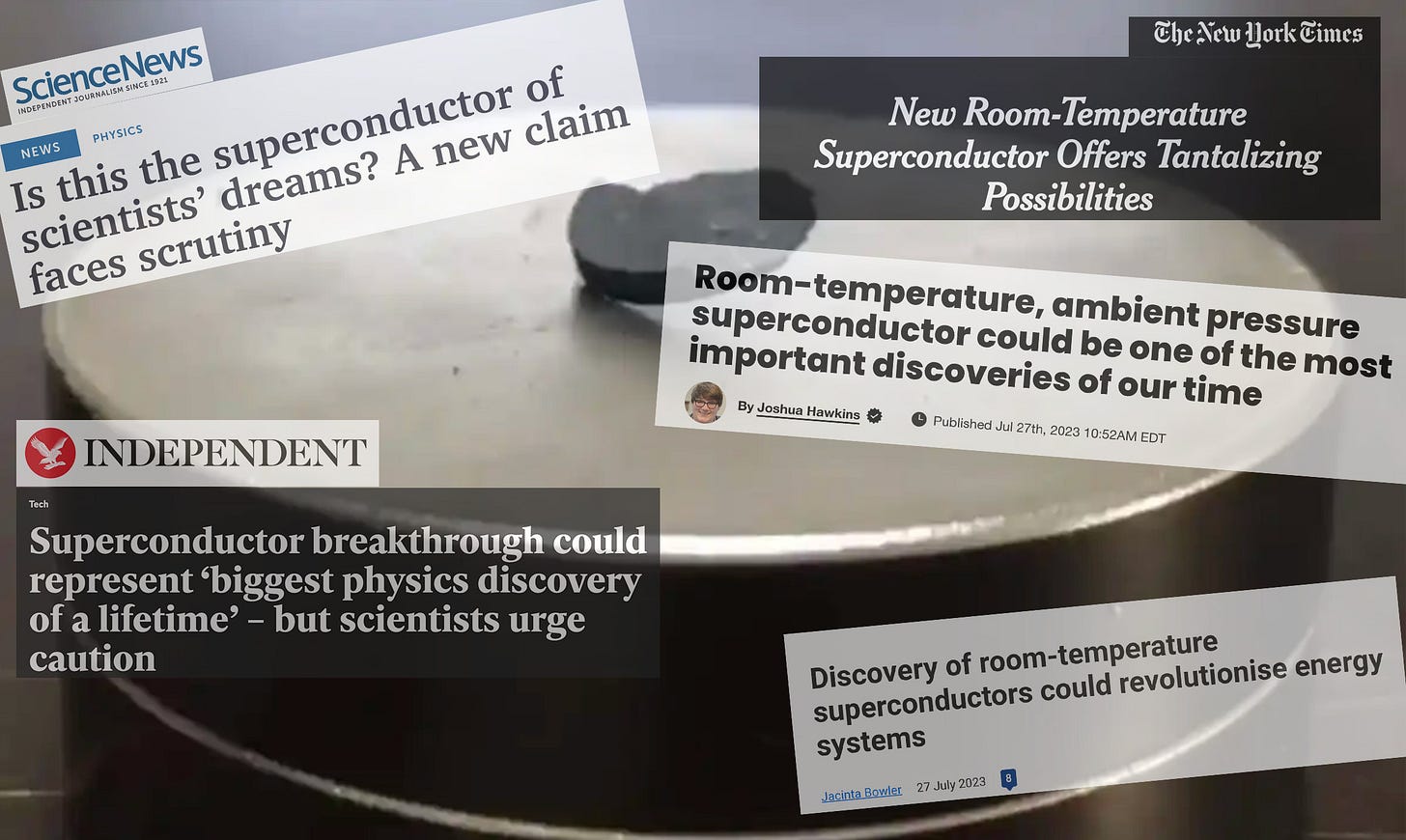Conducting Diligence
“The real art of conducting consists in transitions.” – Gustav Mahler
Roughly once a quarter, a proclaimed advance in the world of science makes the leap into the mainstream media’s hype cycle, triggering a wave of inquiries from readers for our view on the significance of the discovery. As we lamented in “Science by Press Release,” there exists an “unfortunate but growing trend of forcing academicians to justify their work by claiming vast and direct industrial relevance where none exists.” Certain fields are particularly plagued by breakthrough claims that fail to materialize into anything worthy, and many papers are ultimately retracted, either because the results cannot be replicated by others, or the data is a suspected fabrication.
The decades-long chase to discover a room-temperature superconductor has been marked by a number of such instances. Although the phrase “Holy Grail” is often overused, the advent of such a material would be truly game-changing, potentially facilitating advances in quantum computing, alternative energy, and all manner of sensitive electronics applications. While vast riches and a quick ticket to Stockholm to collect a Nobel Prize await those who succeed in demonstrating the phenomenon, some doubt whether such an advance is even possible. Despite the difficulties involved, the potential consequences of success ensure that hundreds of millions in research funds are spent each year in its pursuit.
Earlier this week, news broke that a team of researchers based in South Korea had cracked the code, setting off a torrent of headlines the world over. Here’s how Scientific American framed the developments:
“If rumor has wings, extraordinary scientific claims have a jet engine. Within hours of appearing on the preprint server arXiv.org, two papers by a team of scientists in South Korea generated enormous viral buzz. The researchers’ extraordinary claim is that they have discovered a room-temperature ambient-pressure superconductor, a material that can conduct electricity perfectly under everyday conditions.
A genuine ambient-condition superconductor is often touted for its potential to transform many technologies. It could enable a perfectly efficient power grid, levitating trains, commercially viable fusion reactors—the typical list goes on. The authors wrote that their discovery ‘will be a brand-new historical event that opens a new era for humankind.’”
The claims in these papers are particularly notable because of the giant leap forward they represent—contrary to how science is often portrayed in popular culture, truly revolutionary results are quite rare. The profession is a tough slog, characterized by incremental advances, subtle insights, and expensive experiments that lead to frustrating dead ends. Here, the authors claim their material behaves as a superconductor at temperatures above the boiling point of water, a shocking result that beggars belief.
What are we to make of these developments? Over the years, we have relied on a straightforward five-question framework to quickly assess whether advances such as these are likely to pan out. Importantly, this approach requires no deep expertise in the underlying technology but rather leans on facts of circumstance to answer a handful of essential questions that weigh the odds of real-or-not. Let’s get to it.


